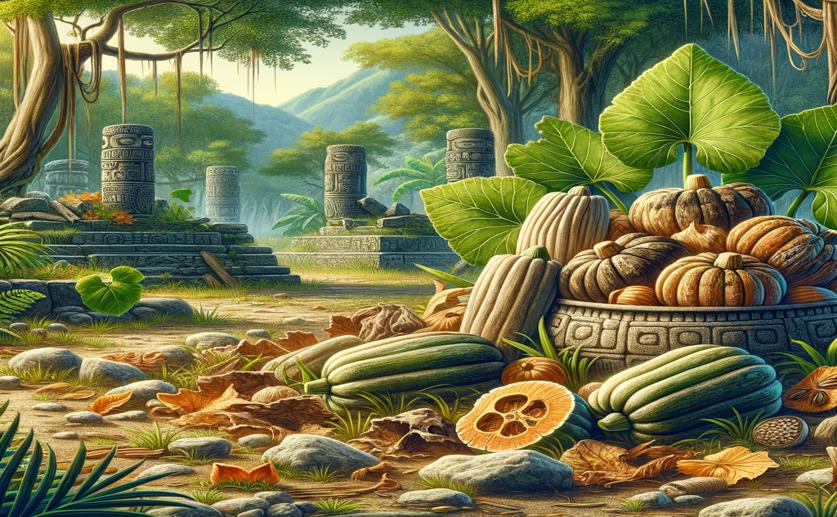
Ancient Plant Remains Show Long-Term Use of Squash in Mesoamerica
Jim Crocker
14th May, 2024

Image Source: Natural Science News, 2024
Key Findings
- The study examined ancient cucurbit seeds, rinds, and stems from the El Gigante Rockshelter in Honduras
- Humans started using bottle gourds and wild Cucurbita around 10,950 years ago, mainly for non-food purposes
- Domesticated Cucurbita moschata appeared around 4,035 years ago, followed by Cucurbita pepo around 2,190 years ago, used increasingly as food crops
AgricultureEnvironmentPlant Science
References
Main Study
1) Archaeobotanical evidence supports indigenous cucurbit long-term use in the Mesoamerican Neotropics.
Published 13th May, 2024
https://doi.org/10.1038/s41598-024-60723-1
Related Studies
2) An Asian origin for a 10,000-year-old domesticated plant in the Americas.
Journal: Proceedings of the National Academy of Sciences of the United States of America, Issue: Vol 102, Issue 51, Dec 2005
3) Gourds and squashes (Cucurbita spp.) adapted to megafaunal extinction and ecological anachronism through domestication.
4) Evolutionary and domestication history of Cucurbita (pumpkin and squash) species inferred from 44 nuclear loci.



 12th April, 2024 | Greg Howard
12th April, 2024 | Greg Howard